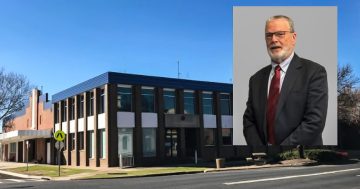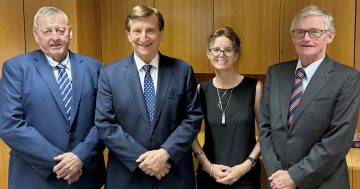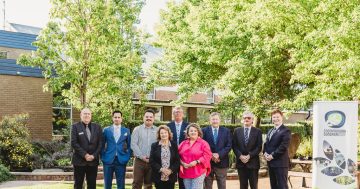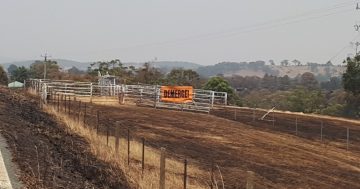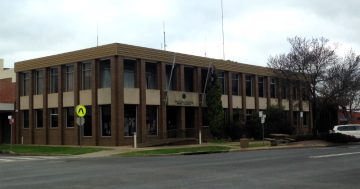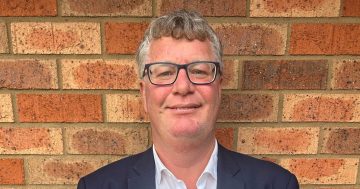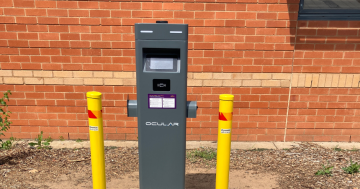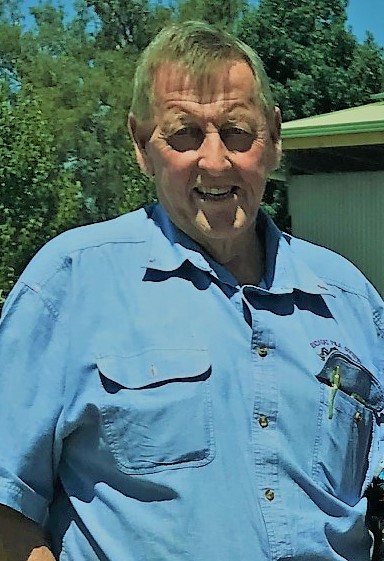
Worrying times ahead for Cootamundra Gundagai Mayor, Abb McAlister, who is concerned the cost of running a merged council will impact most on ratepayers. Photo: Supplied.
There’s only so much a mayor can take.
As he was setting up display stands for this weekend’s Gundagai Show, Cr Abb McAlister made it clear he’s finding it hard to remain positive about the future of the Cootamundra Gundagai local government area.
A straight-shooting Gundagai man to the core, Cr McAlister’s been in local government for years, 15 of which he served as deputy mayor of Gundagai Council and six more as mayor.
He was never happy about his council being forcibly merged with Cootamundra, a sentiment shared by many in his shire.
Cr McAlister and his then deputy David Graham put up $93,000 to fight the merger in the Land and Environment Court. They lost. And are still $93,000 out of pocket.
Despite this, during three years as the democratically-elected leader of this disharmonious pairing he has nimbly juggled and, for the most part, unified the contrasting needs of each community, which, he once claimed, really had just one thing in common: football.
Now he’s worried.
“Oh mate, this merger, to be truthful, it’s cost a lot of money,” Cr McAlister told About Regional.
“Our finances aren’t good at all. Something has to happen in the long run, whether it’s a demerger or the state government puts money in or we’ve got to cut a lot of services and also staff.”
Wages and travel are the biggest costs, he said.
“Wages are now nearly $3m a year more than what they were – that’s $60m there over 20 years.”
Estimates indicate employees travelling the 58 kilometres between offices in Gundagai and Cootamundra are costing the council $600,000 per year.
“It’s the tyranny of distance by the time they pack up, sit in the car, [plus] lost time, fuel, maintenance costs and council expenses.” Cr McAlister said.
Merger justification can be traced back to a 2015 KPMG report commissioned by the state government into potential savings from amalgamating councils, a document that has never been made fully public despite demands for its release.
“Originally in the KPMG report Minister [Paul] Toole said [amalgamation] was going to save us $3m over 20 years – that’s combined councils,” he said.
“When you work it back, that $3 million, we’re only saving $150,000 per year by combining.”
In 10 years’ time, the mayor said, with a special rate variation the council will be handling deficits of around $30 million.
“I want to be positive but it’s hard to be positive when financially the future doesn’t look bright.
“We have a very good council, we work well together and we all want what is best for the ratepayer, but it’s going to be tough. We’re working on rates harmonisation at the moment and there’s going to be some shocks there.”
With former NRMA boss Wendy Machin heading a panel responsible for the selection of regional roads for reclassification to state roads, Cr McAlister said council staff could lose jobs.
“If we lose this 15,000 km of road over the state and they contract it out, we’ll have to put workers off … If you give that money to council, every cent of that money is spent on the road, you contract it out and that contract always has 25 to 30 per cent on top.”
Federal drought relief funding to Cootamundra Gundagai LGA last month delivered $1m and, while welcomed, proved the disparity, Cr McAlister said.
The hilly Gundagai region received more rain in 2019 than Cootamundra.
“Temora and Coolamon have received two lots of drought funding – $2 million each. If we weren’t a merged council we would have received a million each between two ex-local government areas. In fact, Cootamundra would likely have received $2 million. It’s just unfair!”
Amid all this, the former shires of Tumbarumba, Tumut, Cootamundra and Gundagai could be restored, with demerging being considered by NSW Local Government Minister Shelley Hancock. Submissions from the voting public and council where lodged before the January 31 deadline.
Cr McAlister just wants the process followed properly.
“That’s all I ask – and that they’re fair dinkum about it,” he said.







